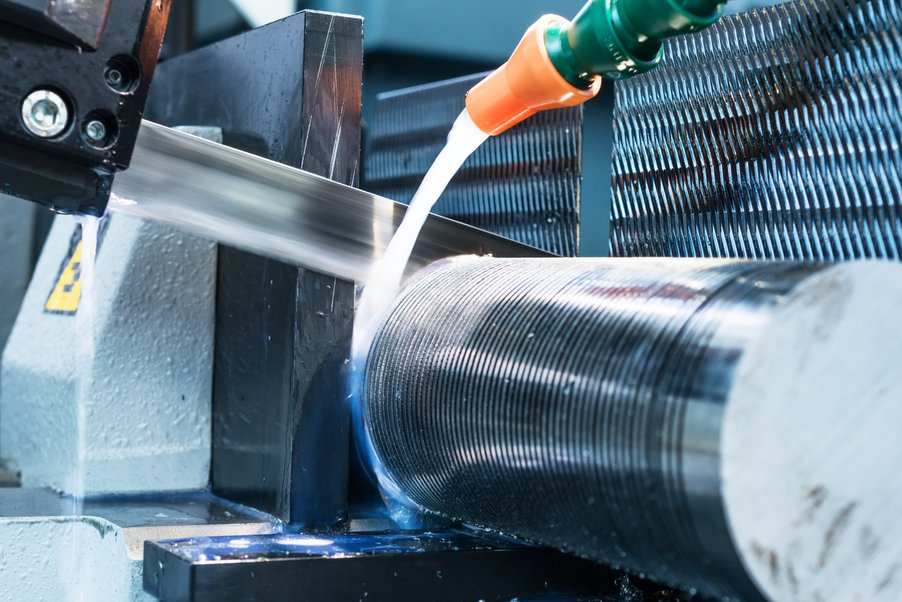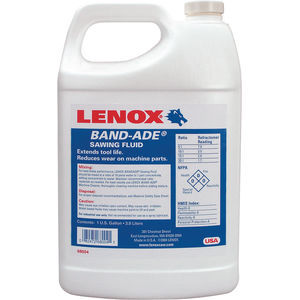Are you wondering what you can use for bandsaw coolant? Well, you’ve come to the right place! Using coolant is essential for maintaining your bandsaw and ensuring it operates smoothly and efficiently. In this article, we’ll explore different options for bandsaw coolant and help you choose the best one for your needs. So let’s dive in and discover the cool world of bandsaw coolant!
No matter if you’re a woodworking enthusiast or a professional, bandsaw coolant is a crucial component for keeping your bandsaw in top shape. It helps prevent overheating, reduces friction, and extends the lifespan of your saw’s blades. But what can you use as coolant?
Don’t worry, we’ve got you covered! There are several effective options available, ranging from specialized bandsaw coolant solutions to common household products that you might already have on hand. We’ll walk you through the pros and cons of each option, so you can make an informed decision on which coolant will work best for your bandsaw. Let’s get started and find the perfect bandsaw coolant for you!

What Can I Use for Bandsaw Coolant?
Bandsaws are essential tools in a variety of industries, from metalworking to woodworking. To keep your bandsaw operating smoothly and efficiently, it’s important to use a suitable coolant. Coolant helps to reduce friction, dissipate heat, and prolong the life of your saw blades. But what exactly can you use for bandsaw coolant? In this article, we will explore various options that can serve as effective bandsaw coolant solutions. Whether you’re a professional or a hobbyist, finding the right coolant for your bandsaw is crucial for optimal performance and longevity. Read on to discover the possibilities!
1) Water-Based Coolants
Water-based coolants are an excellent choice for bandsaw coolant due to their effectiveness and affordability. These coolants are typically mixed with water in different ratios depending on the desired level of lubrication and cooling. One common water-based coolant is soluble oil. Soluble oil combines mineral oil with emulsifiers, surfactants, and biocides to create a stable and efficient fluid. It provides excellent lubrication and cooling properties, extends blade life, and helps prevent rust. Another option is synthetic water-based coolant, which is formulated with additives to improve its lubricating and cooling performance. Synthetic coolants are generally more expensive than soluble oil, but they offer better thermal stability and corrosion protection.
Water-based coolants have several advantages, including their eco-friendliness and ease of use. They are typically non-toxic, non-hazardous, and safe to handle. Additionally, they can be easily mixed with water and do not require any specialized equipment for application. However, it’s important to regularly monitor the concentration and pH level of water-based coolants to ensure optimal performance. Diluting the coolant too much can reduce its effectiveness, while excessive concentration can lead to foaming and bacterial growth.
2) Vegetable-Based Coolants
For those looking for a more environmentally friendly alternative, vegetable-based coolants offer a sustainable and biodegradable option. These coolants are typically made from vegetable oils, such as soybean or rapeseed oil, combined with additives to enhance their performance. Vegetable-based coolants provide excellent lubrication and cooling properties, reducing friction and heat generation during cutting. They also offer good rust protection and are safer to handle compared to petroleum-based coolants.
One major advantage of vegetable-based coolants is their low environmental impact. They are non-toxic, free from hazardous chemicals, and readily biodegradable. This makes them a popular choice for eco-conscious users who want to minimize their carbon footprint. Additionally, vegetable-based coolants often have a pleasant odor compared to their petroleum-based counterparts, which can be an added benefit in enclosed working environments. However, it’s important to note that vegetable-based coolants may have a shorter shelf life and require more frequent replacement compared to other coolant options.
3) Synthetic Coolants
Synthetic coolants are another viable option for bandsaw coolant. These coolants are chemically engineered to provide superior lubrication, cooling, and corrosion protection. Synthetic coolants are typically oil-based and formulated with a combination of synthetic compounds and additives to enhance their performance. They offer excellent thermal stability, which is crucial for high-speed cutting operations or prolonged cutting sessions.
One of the key benefits of synthetic coolants is their ability to maintain consistent cutting performance over extended periods. They have a higher flash point and better resistance to oxidation compared to water-based or vegetable-based coolants. Synthetic coolants also provide superior lubrication and cooling, resulting in longer blade life and improved cutting accuracy. However, it’s important to note that synthetic coolants are generally more expensive than other options and may require careful monitoring of concentration levels to ensure optimal performance.
4) Additional Considerations
When choosing a bandsaw coolant, there are a few additional factors to consider. First, it is important to understand the specific requirements of your bandsaw manufacturer. Some manufacturers may recommend or require specific types of coolant for their machines to ensure warranty compliance. Additionally, consider the materials you will be cutting with your bandsaw. Some coolants may be better suited for particular materials, such as non-ferrous metals or hardwoods.
It is also essential to properly maintain and clean your bandsaw coolant system. Regularly inspect and clean the coolant tank to remove any debris or contaminants that can affect its performance. Monitor the coolant concentration, pH level, and overall condition to ensure optimal efficiency and extend the life of your bandsaw blades. Lastly, consider implementing a coolant management system, such as a filtration or recycling system, to improve coolant performance and reduce waste.
5) Conclusion
In conclusion, selecting the right coolant for your bandsaw is crucial for maintaining its performance, extending blade life, and ensuring safety. Water-based coolants offer an affordable and effective solution, with options like soluble oil and synthetic coolants providing excellent lubrication and cooling properties. Vegetable-based coolants offer a sustainable and biodegradable alternative for eco-conscious users. Synthetic coolants, on the other hand, provide superior performance and thermal stability, making them ideal for demanding cutting operations.
Consider the specific requirements of your bandsaw manufacturer and the materials you’ll be cutting when choosing a coolant. Regular maintenance and cleaning of your coolant system are essential for optimal performance. By taking these factors into account and making an informed decision, you can find the perfect coolant for your bandsaw and ensure smooth and efficient cutting operations.
Key Takeaways: What Can I Use for Bandsaw Coolant?
- You can use water-soluble coolants specifically designed for metalworking bandsaws.
- Mixing water with a water-soluble coolant can create an effective bandsaw coolant solution.
- Some bandsaw owners also use cutting oils or lubricants as coolant alternatives.
- Antifreeze solutions can be used as coolants for bandsaws in cold working conditions.
- Make sure to choose a coolant that is compatible with your bandsaw’s material and requirements.
Frequently Asked Questions
Looking for the best coolant for your bandsaw? We’ve got you covered. Below, you’ll find answers to some common questions on what you can use for bandsaw coolant.
1. Can I use water as a coolant for my bandsaw?
While water can be used as a coolant for your bandsaw, it may not be the most effective option. Water can cause rusting and may lead to bacterial growth if left stagnant. Additionally, water can evaporate quickly, requiring frequent refills. It’s advisable to consider other coolant alternatives for better performance and longevity of your bandsaw.
Instead of using plain water, a popular choice is to mix it with a water-soluble coolant concentrate specially formulated for machinery like bandsaws. This mix creates a lubricating solution that helps reduce friction and heat, extending the life of your bandsaw blade. Water-soluble coolants typically contain additives to inhibit corrosion and bacterial growth, making them a better choice than water alone.
2. What are some alternative coolant options for my bandsaw?
Aside from water-soluble coolants, there are other options you can use as a bandsaw coolant. One popular alternative is cutting oils, which are designed to lubricate and cool cutting tools. These oils provide excellent cooling and lubrication properties, aiding in the smooth operation of your bandsaw. However, be cautious when selecting cutting oils, as some may not be suitable for use with certain metals or materials.
Metalworking coolants, such as synthetic or semi-synthetic coolants, can also be used for bandsaw cooling. These coolants are specifically formulated to provide good lubrication and cooling for cutting and machining operations. They generally have better rust and microbial resistance compared to plain water, making them a reliable choice for bandsaw coolant.
3. Do I need to dilute the coolant concentrate before using it?
Yes, it is necessary to dilute coolant concentrates before using them in your bandsaw. Typically, coolant concentrates need to be mixed with water according to the manufacturer’s instructions to achieve the proper coolant-to-water ratio. This ratio may vary depending on the specific coolant concentrate and the application. Diluting the concentrate ensures that the coolant has the right balance of lubricating and cooling properties, optimizing its effectiveness.
Always refer to the manufacturer’s guidelines for the correct dilution ratio and mix the coolant concentrate and water thoroughly before adding it to your bandsaw’s coolant system. Following the recommended dilution ratio will help maximize the performance and lifespan of both your coolant and your bandsaw.
4. How often should I change the bandsaw coolant?
The frequency of coolant changes for your bandsaw depends on various factors, such as the type of coolant used, the intensity of use, and the working conditions. As a general guideline, it is recommended to change the coolant every 3 to 6 months to ensure optimal performance and prevent the buildup of contaminants.
However, it’s important to monitor the condition of your coolant regularly. If you notice signs of contamination, such as a foul odor, discoloration, or poor cutting performance, it may be necessary to change the coolant more frequently. Regular maintenance and visual inspections will help you determine when it’s time for a coolant change.
5. How can I dispose of used coolant properly?
Proper disposal of used coolant is essential to protect the environment and comply with local regulations. In many cases, coolant can be recycled or treated to remove contaminants before disposal. Contact your local waste management authorities or recycling centers for guidance on proper disposal methods and any regulations specific to your area.
If recycling or treatment facilities are not available, it’s important to follow proper disposal procedures to minimize environmental impact. Avoid pouring coolant down drains or into natural bodies of water. Instead, seal the coolant in leak-proof containers and dispose of it as hazardous waste or according to the guidelines provided by your local authorities.

Summary
So, to wrap things up, when it comes to finding a coolant for your bandsaw, there are a few options. First, you can use water mixed with a coolant concentrate specifically made for metalworking. Another option is to use vegetable oil or mineral oil. Both of these can provide a good, affordable coolant for your bandsaw. Just remember to clean the bandsaw regularly and use the coolant properly to keep your machine running smoothly.
